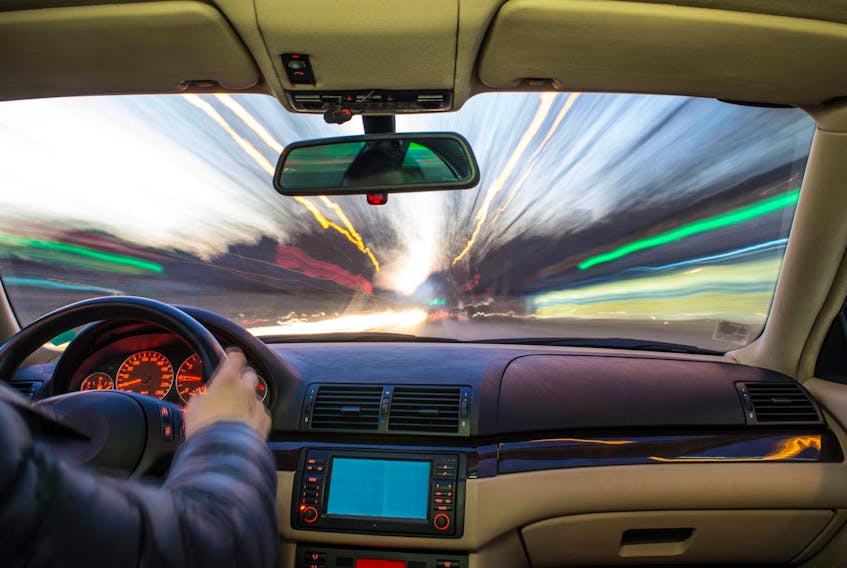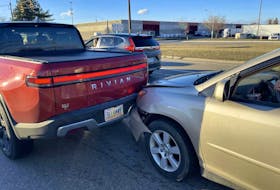It hardly qualifies as road rage, but one of the driving issues we get most upset about is people who cannot maintain a steady pace.
You know the ones I mean, you catch them and prepare to pass and they suddenly speed up. Or once you have passed, they’re riveted to your bumper.
What is it with these folks?
Inattention. You have caught up with them for one of two reasons. They have either assumed a slower pace that is comfortable for them, or been distracted and allowed their attention to wander and speed to drop.
If they are comfortable with the pace, they will most likely maintain it, before and after you pass. But in the vast majority of cases Joe or Jane were otherwise occupied and just happened to have a steering wheel in their hands when you arrived on the scene.
Watch other motorists as you approach. You can identify driver distraction quite easily. Their speed will stay the same, within a few km/h, but then it will suddenly slow — look closely and the chances are they are either adjusting the sound system, conversing with a passenger, or talking on the phone.
In almost all cases, this sudden change in performance will be driver distraction of some type. It is very rare that distraction results in increased speed.
You can entertain yourself during long trips by watching this phenomenon. The same driver who has religiously been maintaining the same pace as you — ahead or behind, will suddenly fall back.
Watch for hand or head movements if they have company in the car, chances are, they will be gesticulating or otherwise showing indications of a conversation. Or, you’ll see head movement indicating they are looking for or doing something in the vehicle.
But it is not necessarily a cell phone, conversation or in-vehicle distraction that will cause this variance in speed. You can also pick out the driver who’s attention is somewhere else. This will usually result in your drawing them out of a reverie.
As you approach this driver from behind, they at some point will speed up — often as you pull into the outside lane to pass. Your presence has figuratively — hopefully not literally — awaken them. Their speed will increase noticeably and they will match your pace or fall in close behind following you.
Some part of their thought process will cause them to fasten on the rear of your vehicle closer than a bumper sticker and maintain the same pace. We’ve talked to drivers who took the wrong exit or passed their exit while following another vehicle. Involved in deep thought, they simply were keeping pace with another vehicle in their peripheral vision.
But, more often they will follow you for a period of time — until they get back to wondering what’s for dinner tonight, about that customer or who’s going to win the game. Then, they will fall back into a stupor during which they are steering the vehicle — but not actually driving it.
Keep an eye on them, because as soon as their attention leaves the task of driving and goes elsewhere, they will start to fall back again. But that doesn’t mean you’ve seen the end of them. Sometimes they’ll wake from their mental wandering, realize their speed has dropped or they are late and with full attention restored, speed up and come flying by.
We’ve observed this performance in many countries. It is not exclusive to North America, just far more prominent here. The argument could be made for poor driver training or performance, just as it could with endless miles of excellent roads with relatively little traffic and plenty of opportunity to allow your attention to wonder.
In Europe or Asia the training is certainly far more demanding, requiring months or years of study and instruction at a cost of thousands of dollars. This commonly results in a better-prepared novice driver. But the roads are far more crowded and rarely do these people encounter more than a couple hundred metres of empty pavement.
With today’s emphasis on more work from fewer people in less time, and an increasing trend to work from home, the driver you encounter on the road is likely going to, coming from or engaged in work. The added traffic on our roads is not an increase in tourists, it is Joe and Jane going to or coming from work.
Driver distraction has become a hot topic among traffic safety practitioners, most often centred on cell phone usage. But it’s not just the cell phone that’s a problem, it’s the distraction, the fact our thoughts are not on the job at hand.
When you are preparing a multi-course meal you concentrate on the ingredients, the cooking time, the preparation.
When you tackle the back nine you’re concentrating on club selection, wind direction and pin location. On route to a business presentation you concentrate on points to be made, reactions and timing.
Why is it then, that many motorists are thinking about that meal, game or presentation instead of the most important job of their life — and the lives of many around them — driving?
RELATED:









